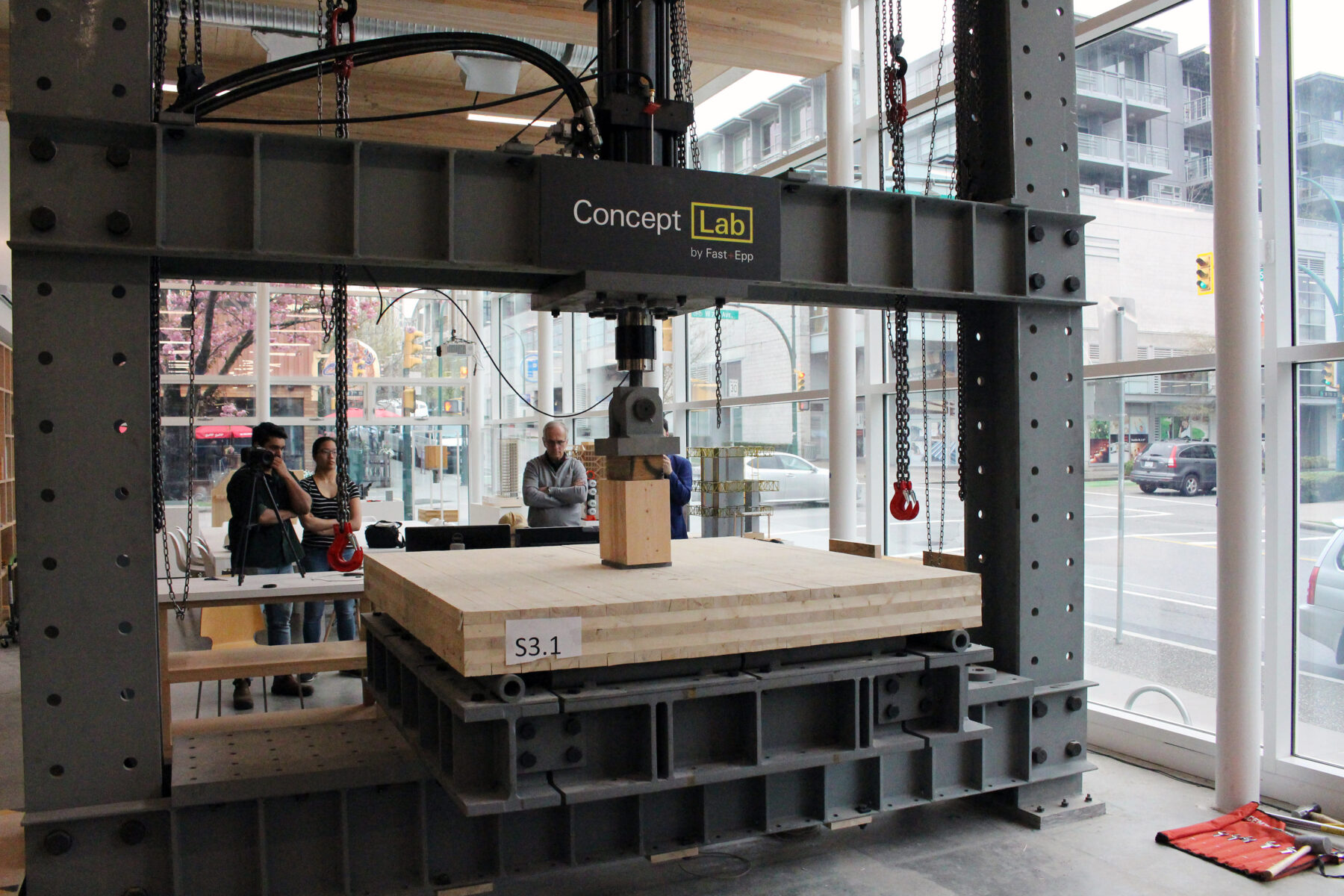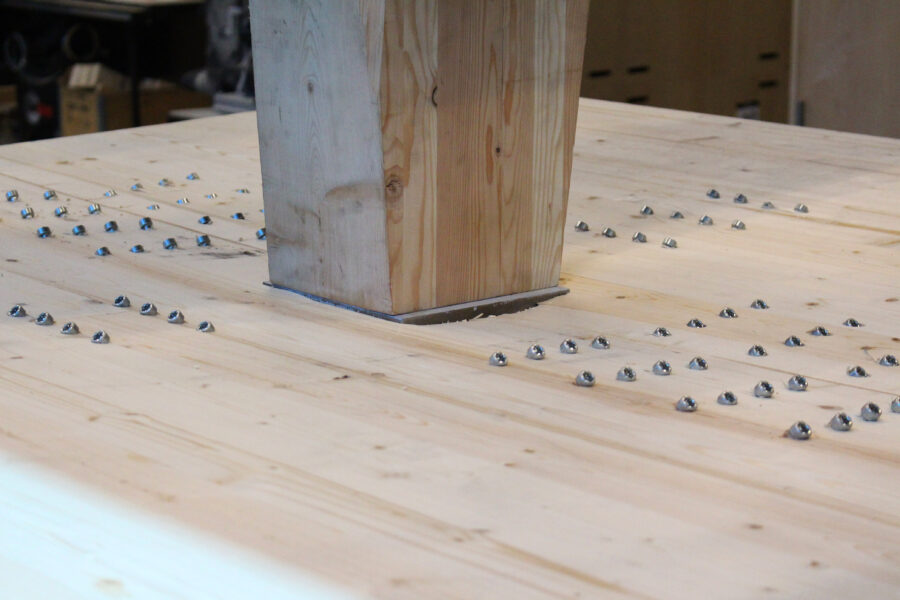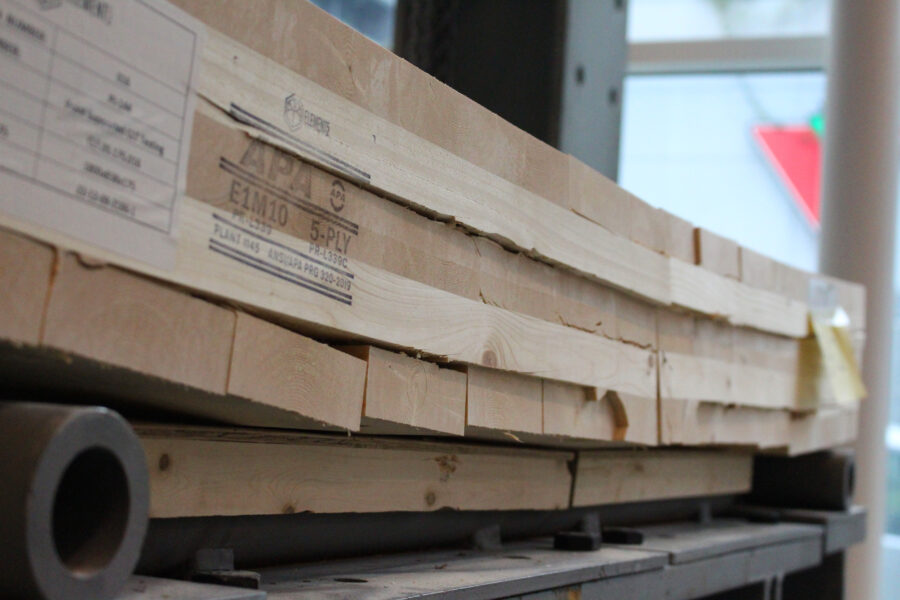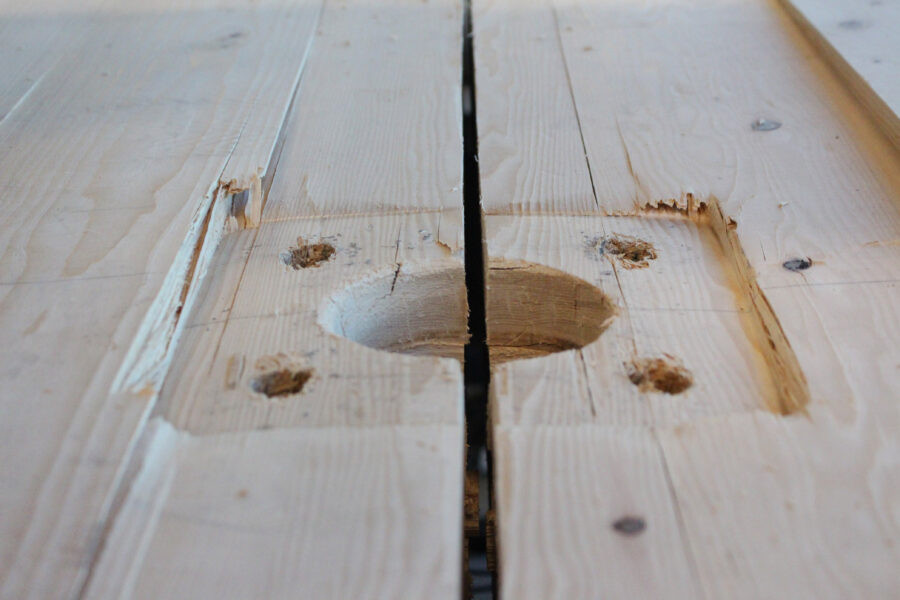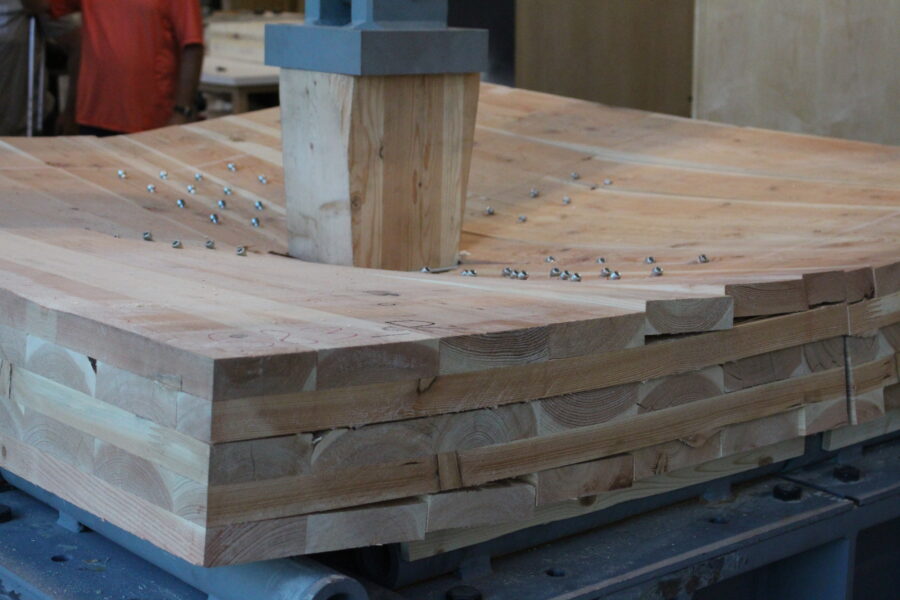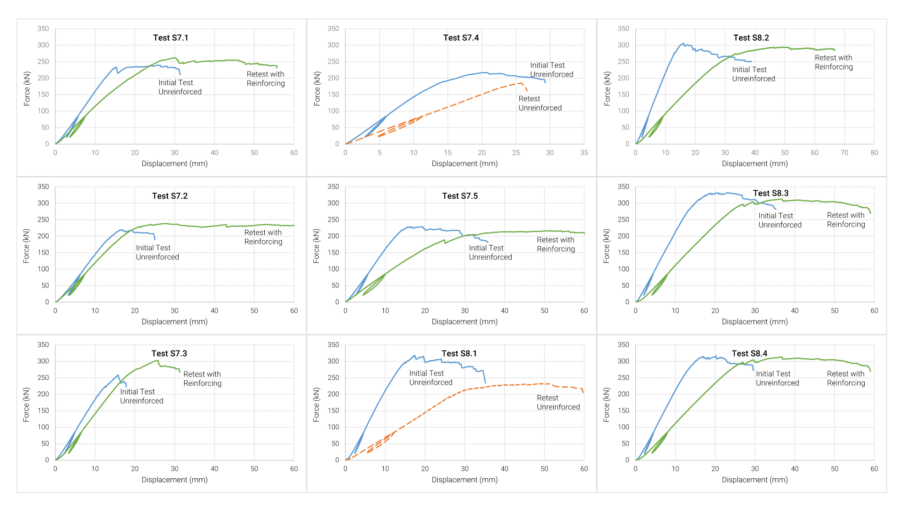Test summary:
The typical screw reinforcing pattern increased the punching shear capacity by 30% compared to unreinforced SPF (S7.X) and DFir (S8.X) CLT samples.
Retesting w/o screw reinforcing: Two panels, S7.4 and S8.1 were retested without adding reinforcing, and the specimen was softer and weaker than the original test (orange dashed lines in the attached plots). The strength was 85% (SPF) and 73% (DFir) respectively compared to original panels.
Repair and retesting with screw reinforcing: The retested samples with added reinforcing were also softer than the original tests (see the green curves). The repaired panels strength was about 107% (SPF) and 97% (DFir) respectively compared to original panels.
The reinforced retested samples were therefore increased by 30% from the unreinforced retest. The reinforcing screw pattern worked just as well on a panel that was already overloaded and broken.
This testing shows that point-supported CLT panels can be repaired with fully-threaded reinforcing screws to meet or exceed their original design strength in the event that a panel was overloaded and significantly damaged.
It also demonstrates that an unreinforced panel can be practically reinforced in-situ if there is a change in building use that requires increased strength. This is a remarkable demonstration of the resiliency and adaptability of mass timber!
